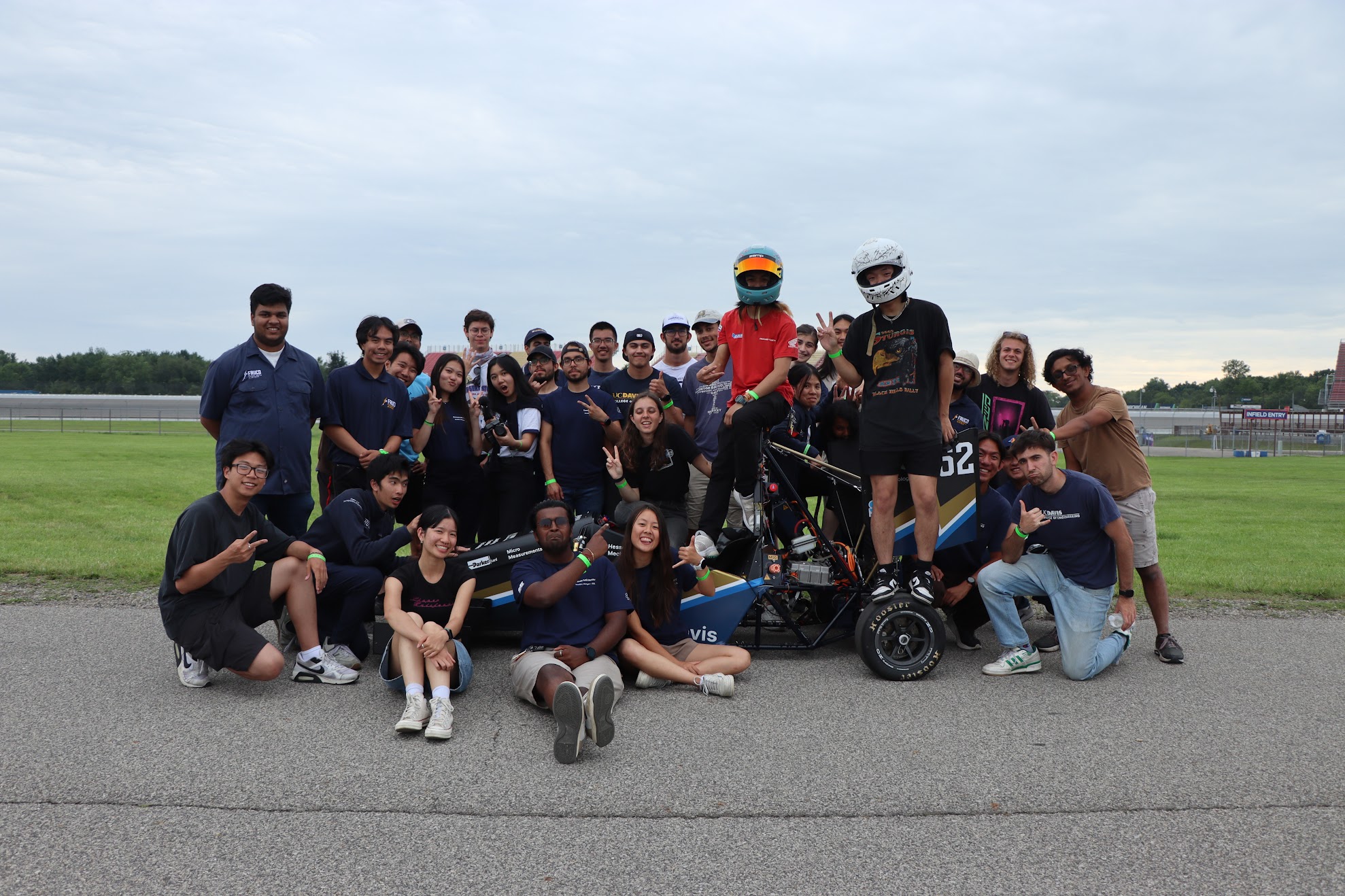
Summer Session Updates
June/July 2025 Newsletter
FRUCD is proud to report that we have wrapped up another competition season! We didn’t get the competition results we were hoping for. On Day 4, we were unable to advance to the EV Active Technical Inspection due to persistent electrical issues. As a result, we were not able to compete in any of the dynamic events, including endurance, the same event we fell short in last year with FE11. However, these results are not a reflection of this team’s success. FE12 was an improvement in many ways:
- First-ever car with a front and rear wing
- Accumulator was 20 kg lighter than FE11
- Uprights were manufactured entirely with a 5-axis CNC machine for the first time
- Chassis manufacturing was finished by March 8th (a whole week early)
- Placed 13th in Cost, 30th in Design, and 33rd overall
- Built a loving, positive, and encouraging team culture -FRUCD felt like family, especially after living together for 2 weeks in Michigan
- Our final results include:
- 33rd Overall
- 30th in Design Event
- 39th in Business Event
- 13th in Cost Event

While it’s only been a few days since we got back from competition—and many of us are scattered around at home or at internships—FRUCD is already back to work on FE13. We can’t wait to come back with a lighter, faster, and more competitive car next June.
In the weeks leading up to comp, Aero and Composites were able to finish designing and building our upgraded wing. At the competition, in our first year competing with an aerodynamics package, we earned a score of 12/15 points in the Aerodynamics portion of the design event. During competition we were able to gain insight from peers and industry experts that we will use to advance our composites manufacturing, CFD simulations, and design our new aero package for FE13.
We also passed the accumulator tech inspection on day 1, which was one of the main technical inspections, and verified that the accumulator was rules-compliant and safe to operate. We had the opportunity to check out and talk with other teams regarding their accumulator designs, and were able to gather new ideas and learn from them. We plan to dive deeper into testing and validating our cell and thermal models with track day data to improve on last year's design.
For electrical, a last-minute issue with the high voltage detect circuit unfortunately prevented us from going through EV Active tech. However, we worked to fix it up to the last possible minute and received plenty of advice from alumni, sponsors, and judges, and learned a lot in the process. This summer, we plan to restructure our HV detection system and focus on areas of the car, namely data collection, that we had to omit for competition.

Chassis had to make a few minor tweaks to pass mechanical inspection. We also received valuable feedback on how to improve the accuracy of our torsional stiffness model and set better performance targets for next year’s car.
Firmware had a straightforward experience at competition, with vehicle firmware and data acquisition running properly, which was great given previous issues with our SD card and CAN pipeline. Unfortunately, due to our inability to enter dynamic events, we had to forgo testing the access point while the car was in drive. Nevertheless, our telemetry system currently works while stationary, and we intend to refine its design in the coming year. In particular, we plan on removing one microcontroller, with which we have had unreliable experiences, as well as using a new WiFi module to provide greater redundancy and reliability for wireless telemetry.
The wheel package subteam succeeded in its goals during the competition, which were to provide FE12 with a functional wheel package design that passed mechanical technical inspection and scored well in design. Moving into the next season, we plan to improve the accuracy of our simulations for our brake rotors and uprights by utilizing the feedback and insights gained at the competition.

Looking into the future of FRUCD, with the upcoming development of FE13, our team has worked into the summer months to improve as much as possible.
In other news, Aero and Composites has renamed their subteam to Aerostructures, reflecting the goal of providing their members with both aerodynamic and composite experience. Over the summer, the newly named subteam has been working with the ESDC to gain approval to do layups in the composite room. They’ve also been exploring new software, called XFLR5, to streamline the airfoil simulation process.
Wheel Package has also gotten right to work over the summer, designing major components like uprights, spindles, and tripod cups. Working towards another goal, they have also started working on increasing the accuracy of our sims, improving the design experience for all.
As you can see, our team has had a busy June and July with competition and the advent of FE13. We can’t wait to see what more our members do before fall classes are in session!
